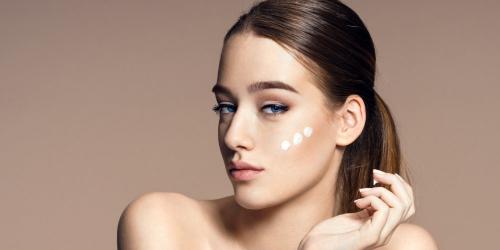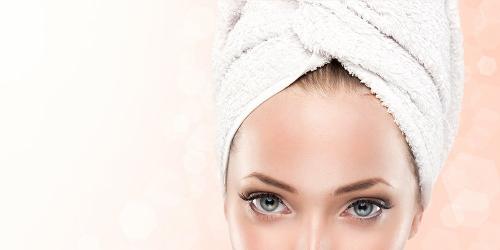We can not live without him but we must be wary. If its rays have positive effects on our body, they can also be fatal.
In short, the sun does us good as well as bad. However, scientists have been trying for decades to identify its negative effects, to neutralize them with more and more successes every day.
Filters are more and more effective against the deleterious effects of the sun
Yes, but ... "Our filters have made unprecedented progress and protect against UVB, short and long UVA and some, even infrared," explains Véronique Delvigne, director of scientific communication Lancôme. But there is a very small window of skin that the filters do not protect and where UVA sneaks. However, it must be remembered that if UVB "tans" and "burn", UVA are even more deleterious. "
They penetrate deep into the dermis, damage cells, damage their nucleus and lower our immunity by attacking our defenses (Langherans cells). Paralyzing them leads to oxidative stress that generates a whole series of free radicals. However, 95% of UV that we receive are UVA with 80% UVA long and all year round, even without sun.
"L'Oréal, which has already developed gifted filters like Mexoryl® and Mexoryl® SX anti-UVA and UVB, is formulating new combinations that can protect us 100%," says Véronique Delvigne.
Some brands launch sunscreens with almost total protection ("almost" because we must let vitamin D) by adding molecules (polyphenols, resveratrol, vitamins C, A, E ...) that trap free radicals just when they are form, thus preventing them from harming.
Rays indispensable to life
Yes, but ... if we do not take drastic protection measures, it can be extremely dangerous. "The sun releases endorphins, these hormones of well-being, and opiate derivatives.
It allows the manufacture of vitamin D by our body, and photoprotective pigmentation, "said Pr Aubin (dermatology department of Besançon) at the annual conference organized by the French Society of Cosmetology in Paris.
UV, on the other hand, damages cells, damages their membrane, cytoplasm (inner) and their nucleus. They cause damage to the genome (all of our genetic material) and prevent certain proteins that are responsible for removing bad cells from doing their job. In addition, if they are too violent, they degrade vitamins (A, B, C), cause photosensitization reactions ( lucite , which affects 20% of women) and are obviously responsible for skin cancers, the most common human cancers.
Not to mention photoaging: "UV disrupts the natural mechanisms of skin regeneration," explains Isabelle Benoit, Esthederm's director of innovation.
In normal times, fibroblasts synthesize household enzymes that "suck up" damaged fibers. But in case of excess sun, UV increases the synthesis of these enzymes. They do too much and sweep all the proteins (collagen, elastin, etc.) in the manner of the Sorcerer's Apprentice. "
And here are the wrinkles that appear.
Last but not least, UV causes a decrease in immunity favoring skin infections, not to mention ocular lesions (solar cataract).
"In summary, says Pr Aubin, UV has multiple biological effects more or less beneficial or harmful to health based on genetic susceptibilities of each. "
The development of more "secure" mineral filters
Yes, but ... do not they let nanoparticles through the body?
"We include in the solar organic filters, which absorb UV rays, and mineral filters, which reflect them as mirrors. It is therefore interesting to associate them to have the best possible protection, "says Caroline Debbasch, Scientific Director at Clarins. For example, titanium dioxide, a little decried a few years ago, was used because it left white marks and its thick consistency was uncomfortable.
"At present, it is micronized and its nanoparticles allow sensory textures that encourage users to deliver cream regularly. "
Scientists guarantee that this mineral filter does not penetrate the skin, even in case of abrasions. It would be an inert component without any toxicity that is found elsewhere in food products (chocolate chips, marshmallow and other confectionery) but also toothpastes.
UVB needed for the body to make vitamin D
Yes, but ... we must also protect ourselves. "Recent studies are astonishing," says Christiane Montastier, director of scientific communication Rubinstein and co-organizer of the symposium of the French Society of Cosmetology. They show that in temperate countries, women, children and the elderly lack vitamin D. "
This results in less effective calcium absorption, impacting bone health and slowing cell regeneration. And even, as some studies would tend to prove, a greater susceptibility to cancerous diseases. Hence a controversy quite passionate.
Australian dermatologists and some Americans are violently opposed to exposure, even very short, UVB. They recommend insoluble anti-UVB screens and recommend drug supplementation.
In Europe, especially in France, SPF50 anti-UVB creams (except on holidays) are not recommended on a daily basis, but we vote for anti-UVAs that allow a little UVB for vitamin D synthesis. elsewhere a very short exposure each day to the UVB (about twenty minutes) on a few centimeters of skin to cover all our needs.
"It is, in any case, the order of wisdom of European doctors," says Christiane Montastier.
Tanning strategies with carotenoids
Yes, but ... they mostly have no UV filtering effect.
" Carotenoids are pigments, orange yellow in general (carrots, tomatoes ...). There are more than six hundred but no human being is able to manufacture them, explains Etienne Soudant, scientific director of Peaux-Cibles, innovation consulting firm for cosmetics.
They are synthesized by plants, algae, fungi and some bacteria. It is true that they give a beautiful color to the skin that derives its tint melanins, hemoglobin (blood), and therefore carotenoids. "
Simply put, they color the skin but it is wrong to believe that they increase the synthesis of melanin. On the contrary. We are therefore less protected from UV.
On the other hand, carotenoids are very effective against lucite and those who suffer from it have every interest to make a cure before exposing themselves. But these molecules have other interesting resources because they are depigmenting and will soon be exploited in anti-stain creams .
What if we were vaccinated against UV?
"Vaccinate" the skin against UV? Dermatos have been calling for it for a long time. Scientists accelerate their research and progress through two simultaneous actions.
On the one hand, an XXL antioxidant response is activated in the cells, on the other hand, the DNA repair pathway is boosted. It remained to find a new molecule capable of this double job. Patience! We are almost there…
* Most of the sun's rays are stopped by the earth's atmosphere. However, a part comes to the surface of the skin. The nanometer (nm) is the unit of measurement of the wavelengths of these rays. The UVB are the shortest (between 280 and 350 nm) the UVA range from 315 to 400 nm.
As for the UVC, they are absorbed by ozone, otherwise there could be no life on Earth. Finally, infrared has a wavelength greater than UV and we know today that they also participate in aging of the skin.


